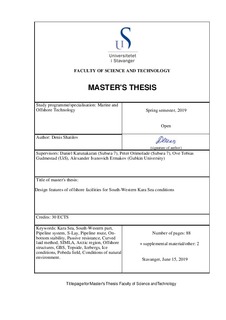| dc.description.abstract | The increasing hydrocarbon deposit depletion degree leads to the necessity to engage new promising territories in field development. In Russia, the depletion of petroleum fields has exceeded 50% of their potential, while even the maximum field development of explored reserves will not be able to give the required hydrocarbon production level. According to the research estimation (Zolotukhin, 2019), 93% of hydrocarbons accounted for in the Arctic region are concentrated in a dozen of large fields. The percentage of gas in Arctic hydrocarbon reserves reaches 78% while the percentage of oil is 22%. Moreover, two thirds of petroleum fields are located on Russian territory. The Kara Sea is a part of the Arctic shelf and it has significant hydrocarbon reserves. Pobeda is one of petroleum deposits situated on Kara Sea shelf. In the Arctic harsh conditions, careful analysis is required for the effective field development of this field. Eventually, it is necessary to apply robust technologies and concepts for Arctic offshore fields, including the Pobeda field. In frame of the master thesis, technological evaluation (namely, technological readiness and risk evaluation) will be discussed. There are two major areas for evaluation. They are offshore construction and offshore transportation system. The first part emphasizes the proper selection of offshore structure, discussing previous experience of arctic field development and analyzing platform design with software and appropriate calculations. The second part considers the hydrocarbon transportation system paying much attention to pipeline design/installation. Pipeline route, pipeline design and installation method will be discussed in this section. For the issues of pipeline routing, the SIMLA software is used. The final chapter of the master thesis gives a technological evaluation and discusses economic aspects for the Pobeda field development. Risk matrix and analyses are included and future recommendations with conclusions are given. The Master thesis suggests conceptual designs, consequently different assumptions are proposed. | nb_NO |
